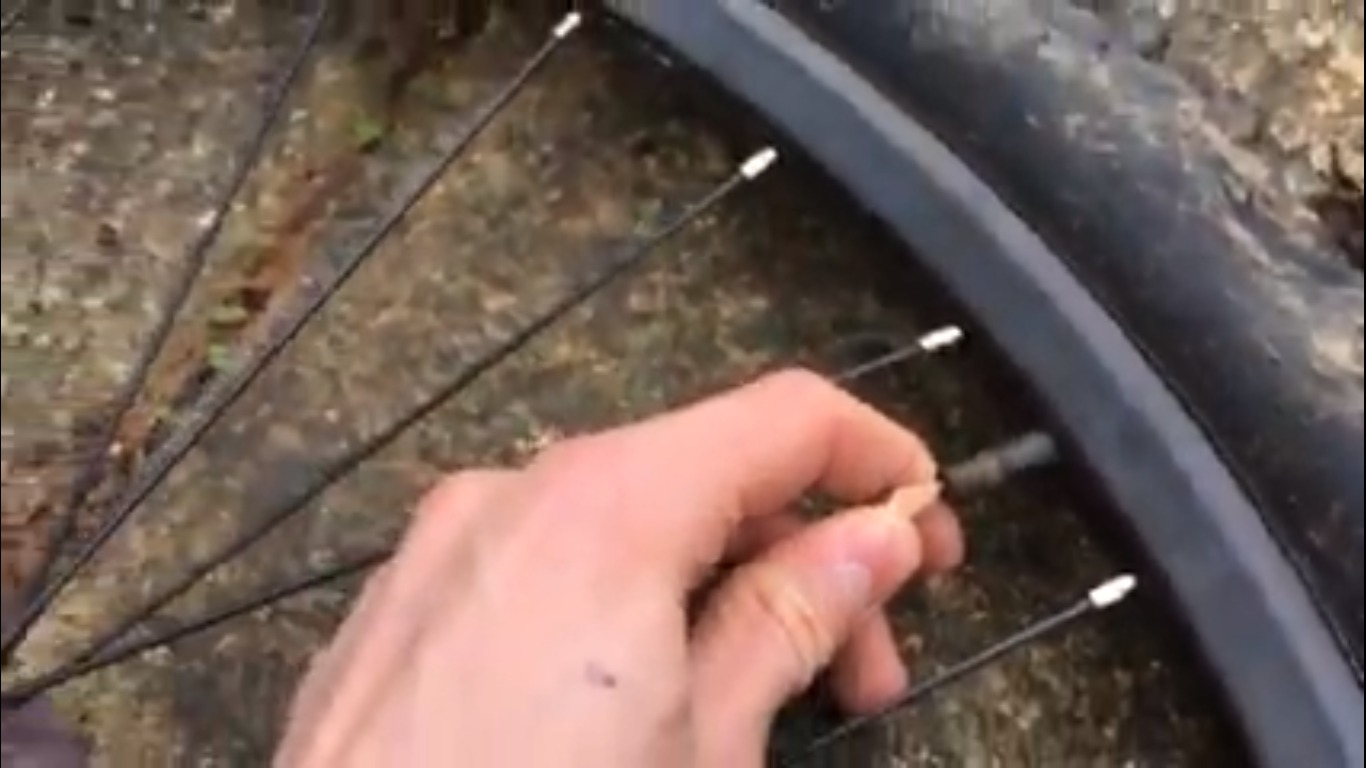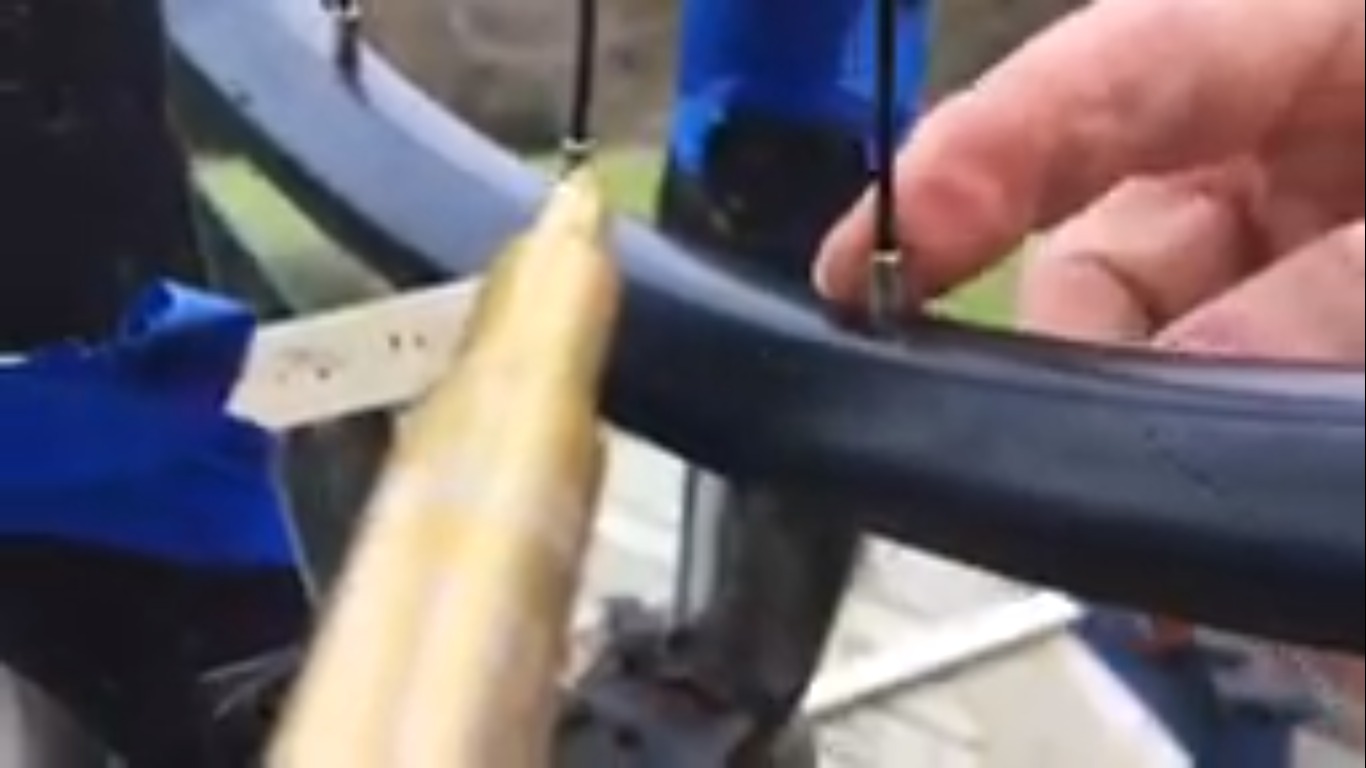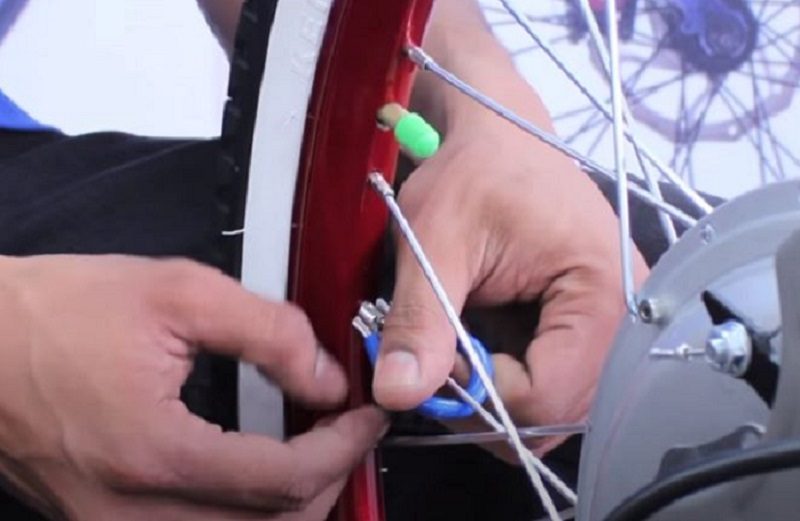It is not unusual for the spokes on the wheels of your bikes to release when in transit. This is an unlucky eventuality that you do not need to happen to you at any price. It is a problem you can simply help by knowing how to tighten bike spokes.
How other can you move ahead without the required direction to that end? We make this article to assist with that. In our reviews here below, we are going to get you through a step-by-step idea of how to tighten bike spokes. Then, we shall consider some of the frequently asked questions surrounding the problem.
Table of Contents
How To Tighten Bike Spokes – Step By Step
Today we at BestComfortBike will give you the guide on How To Tighten Bike Spokes. Follow the methods below to tighten the spokes on the wheels of your bikes:
1: Flatten the tires

Before you begin, you have to empty the tires. That is because there is eternally the probability of punching a hole on the tube of the wheels to cause a flat tire. Alternatively, you may additionally get the tube out of the rim effectively so that you can change the spokes individually and freely. To do this, just open the nozzle that seals off the tube to let the air out.
2: Get the required tools-of-trade
Next, you have to take the required tools-of-trade for the work. The spoke wrench is by far the most important tool for this task as it forms the core of the tightening operation. Assure that the dimensions of that wrench are the identical as that of the nipples of your spoke.
This may need that you map out the dimensions of both the nipple of your bike and the wrench you plan to use. See to it that the two, match as approximately as can be before continuing to make use of the same. Useless to say, the wrench you have in memory has to be hard enough for the job as well.
3: Straighten the rim of the bike

Before you may yet think of stretching the spokes, you should first and first straighten the rim. With continued and replicated use, there is normally the risk of some parts of the rim bending or warping out of shape. This is not a great thing as it prevents the free actions of the bike and your own protection.
Put the jaws of the flexible wrench on either side of the rim. Transfer this wrench easily and gently while at the same time taking note of how it functions in the method. Make speed to revert the curved parts of the rim in line with the rest of the diameter before continuing.
4: Measure the Diameter of the Spoke
Become to the core of the business now. Begin it out by measuring the diameter of the spoke of the wheel you have at hand. This is to discover the level of tension that your spoke requires. Use the Park TM-1 tension meter to perform this onerous job.
The meter further gets out the sizes of the slots that adorn the spokes. To employ it for this special role, you will have to employ an excellent deal of skill, keenness, and attentiveness to detail. Pay appropriate attention to the various diameters if your spoke has many slots.
5: Determine the relevant Spoke Tension
Having pointed out the diameters of the spokes, you now have to explain that to the appropriate level of tension. To determine the relevant spoke tension, use the growth chart that becomes along or is characterized by the tension meter. Recognize the area of the spoke diameter then gets equal tension.
On the whole, the spoke tensions vary considerably depending principally on the sorts of rims you have. Larger rims, usually, needless tension whereas those that are too heavy will frequently require excess tension. In case you are doubtful of the level of tension that is enthusiastic for you, check out with your manufacturer’s instructions.
6: Measure the Present Spoke Tension
Move a step further now to mark the present spoke tension. Keep your tension meter in the horizontal position. Squeeze its handle and then put the spoke in among posts. Consequently, loosen the handle and check the reading in the scale of the meter.
You may, if you so wish, cross-reference this reading with the change chart to ascertain the quantity of force you might require for the job. Continue to measure all the spokes on your wheel one at a time. It is necessary that they bear the same level of tension on average.
7: Change the tension properly
Assume the performance by changing the tension on the spokes respectively. If the tension is more powerful than normal or is required, decrease the same. If on the other hand, the tension is less than expected, extend the same.
To raise the tension, turn on all spokes in the whole wheel quarter-way in a counterclockwise way, and then take the required measurements. Replicate this method many times until your tension is within the wanted range all way round. Hereafter, hop the two nipples and then tighten the third one. Adhere to this pattern all throughout.
8: Examine the System
After you are finished with the methods we have specified above, you should examine the system to see to it that it is both solid and tight. To do this, put the tire tube back to the rim and then fill it. Then try to get a ride with the tires on.
Take out all sorts of manoeuvres like acceleration, deceleration, turns, and other vital procedures. Take note of the way in which the wheels react to these maneuvers. Follow this by using the basic remedial steps to make the tension line up with your expectations.
When all is said and done, make any additional adjustments to the bike like sealing off the holes and repairing some worn-out parts. This may need that you bring in the interventions of qualified technicians as the methods are generally too complex for a simple bike owner.
Frequently Asked Questions
Having checked to tighten spokes, we presently require to answer some of the questions that are frequently asked:
1: How tight should spokes be?
There is no official metric or figure for tightness. Although, there are plenty of circumstances that define the wanted degree of tightness. These are:
-
Bike Weight
The Bike weight is by far the common important determinant of the degree of tension. Heaver bikes usually need greater tension than their lighter equivalents. That is to continue steadfast and operational all the while of use.
-
Rims Size
The opposite is valid for the sizes of rims. More oversized rims, as we have previously described above, demand limited tension. They have the capacity to dissipate the stress consistently while at the same time bearing your weight and that of the load correctly.
2: Do I require to tighten my spokes?
YES, you lack to! When the spokes are left too relaxed, they have the aim to pluck off the wheels at high speeds. Numerous risks are likely to occur with this. For one, the spokes might hurt those who are in the identical area as the bike at that time.
Other than that, they additionally have the aim to shake your bike fast as to deny you the balance and belief you necessitate to soldier on with peace. Tighter spokes are further able to scale faster speeds than their regularly loose counterparts. This is besides requiring limited work on your part.
3: If Spoke would not tighten what to do?
If the spoke would not tighten, that could be symbolic of a strip in the twist of the brass nipple. You have two choices to examine in the case of such an eventuality. They are:
-
Fix the Spoke
Initial and principal, try to fix the spoke. This needs that you dismantle the spoke, recognize the root problem of the issue, and then take the required remedial actions.
-
Substitute the Spoke
If the problem is beyond recovery, you may think replacing the spoke altogether. That, of course, requires that you bring in a brand new spoke altogether and slot in the stead of the current one.
4: How to tighten bike spokes without a spoke wrench?
As you may previously have obtained, we suggested the use of the spoke wrench extensively for the intention of tightening the bike spokes. Possibilities are though that you might never have the tool. There is yet no cause for fear as it is still feasible for you to finish that end without the wrench.
Use some nearly related tools like the spanner, the torque wrench, and of course, the pliers. The specific methods will nevertheless vary as these tools come in shapes and configurations that are considerably distinct from that of the spoke wrench.
5: Can you tighten spokes with pliers?
YES, it is possible! Though, its form is considerably changed from the shape of the bike’s spoke. That asks for you to exercise great care and expertise while trying to pair the two mutually. Be sure that you slot the pliers in the selected holes tightly before setting out.
Then, you should turn the pliers slowly and firmly until you get it right. Rushing may, in fact, pose some injuries to the many parts of the bike. Several studies have also shown that the pliers do not tighten properly. You hence have to re-tighten every now and then to keep the desired tension.
Final Words
Our look into how to tighten bike spokes becomes to an end there. We are now sure that you have the expertise you require to fix your bike without invoking the intercession of a third party. With that, the only thing we can now ask of is for you to continue with haste and complete the same.
Because such a venture is usually dangerous and sensitive, we insist that you practice daily even when you do not have such difficulty. Carry out some mock adjustments using the direction above to gain such expertise. All the best from now going forward…




